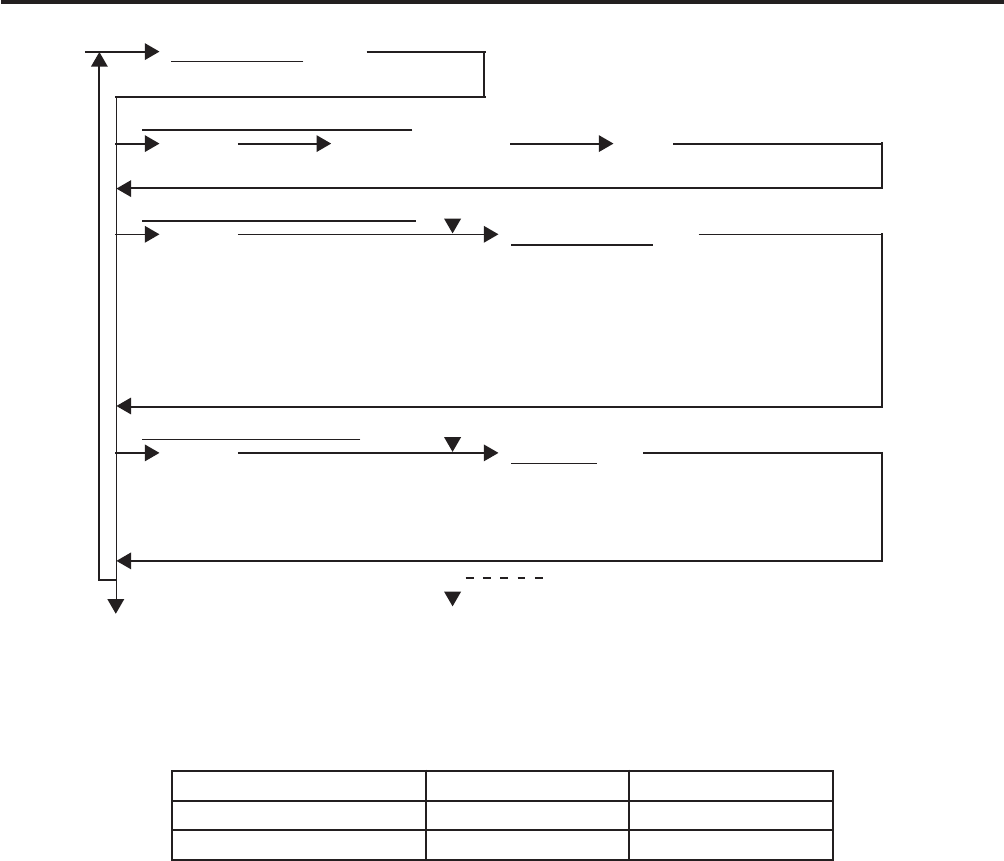
5. PROGRAMMING OPERATIONS
EO1-11138
5-9
For Address 2: Cashier Status
2 [ST] |Cashier Status| [#]
For Address 1: Cashier Name
1 [ST] Character Entries [ST]
(NOTE 1 below)
(max. 12 characters)
0: Cashier for Sale Entries
1: Cashier for Training Entries
2: Cashier for All Guest Order Tables
accessible (NOTE 2 below)
3: -- vacant --
4: -- vacant --
5: Server (NOTE 3 below)
...... ......
For Address 3: Tip Rate
3 [ST] |Tip Rate| [#]
0 to 99.99 (%)
(Use the [ . ] key if a decimal
portion is contained in the rate.)
(NOTE 4 below)
....
[AT/TL]
NOTES: 1. The following table shows the Cashier Codes that can be entered. (The capacity is determined by
the RAM Allocation Setting. ) However, the actual maximum number of the cashiers are
preprogrammed. Therefore, ask your TOSHIBA TEC representative for further information.
For sequentially programming the
address, the Address number
specification can be skipped.
Standard Memory Expansion Memory
Code Entry Type 1 to 15 1 to 99
[CLK] Key Type 1 to 8 ---
2. Cashier status 2 (Cashier for All Guest Order Tables accessible) is effective only when the
program option “Cashier Exclusive” is selected.
3. A cashier whose status is “server” can only take an order from a guest, but not finalize a sales
transaction.
4. The following shows the way to calculate the tip amount:
Tip Amount = (Net Sale Without Tax) x (Tip Rate)
5. For a name of each cashier, a maximum of 12 regular-sized or 6 double-sized characters can be
entered. A combination of both types is also available.
2 [X] |Cashier Code| [NS]
Repeat for
another
cashier.
5.4 How to Access a Program Item


















